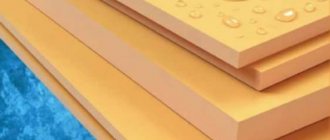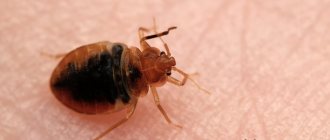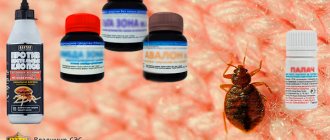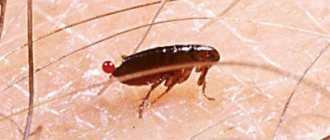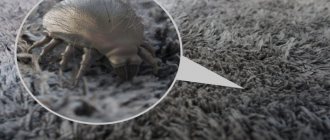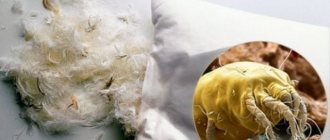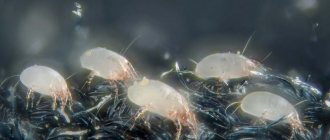Feather mites in pillows. Where do they come from, why are they dangerous, and how to remove them?
House mites , snow mites
, or
dust mites (
lat.
Dermatophagoides people
’s homes and are capable of causing an allergic reaction in people—mite sensitization .
According to doctors, the spread of diseases such as bronchial asthma and allergies depend on the presence of dust mites. They cannot be seen with the naked eye. But these “guests” are present in almost every home; they live in places where dust accumulates, on mattresses, carpets and pillows. People, without realizing it, lie down on pillows or mattresses that are “infested” with ticks. Ticks live for about 80 days, leaving behind a clutch of eggs (about 60 pieces). They live in colonies. One gram of dust can contain from 10 to 10,000 individuals.
Dust (feather) mites always live next to humans; they feed on woolen lint in bedding. But the main source of food is dead human skin cells.
As a rule, if there are 500 or 1000 individuals per 1 millimeter, this will cause a lot of problems:
· bronchial asthma
· rhinitis,
· dermatitis,
· conjunctivitis,
· respiratory allergy.
If you notice constant nasal congestion, frequent sneezing, itching of the mucous membrane, redness of the eyes, itching of the palate, wheezing in the chest, heavy and difficult breathing, dry cough, skin irritation, redness, burning, peeling, itchy skin, we recommend taking action.
To make sure that the room is contaminated, the dust should be submitted for examination.
Prevention measures:
ü Wet cleaning. It is highly undesirable to wipe off dust with a dry cloth or broom, because allergy-causing substances will spread throughout the home.
ü Use a vacuum cleaner, it will trap allergens, preventing them from spreading throughout the apartment. It is also worth vacuuming soft parts of furniture.
ü Washing – bedding should be washed as often as possible using hot water. The temperature should be at least 60° C; this will destroy the insects. In addition to bed linen, you need to wash soft toys, curtains and drapes.
ü Freezing – not all items can be soaked, so they can be frozen. In winter there is no problem with this. To obtain a good result, items must be in the cold for at least a day.
ü Humidity – dust mites love high humidity. Try to lower it.
ü Temperature – a temperature of 25-30° C is considered comfortable for dust mites; therefore, it is advisable to maintain a temperature in the room of 21-23° C.
ü Disinfectants can be used not only when the bed becomes infected, but also for preventive purposes. LIZOL is suitable for these purposes.
ü Get rid of junk - go through old things: books, accessories, jewelry, decorative pillows.
ü Cleaning animals – animal hair is another source of dust mites. Brush the coat regularly, outdoors, with a brush.
Currently, there are many fillings for bedding that are not suitable for parasites (for example, bio-pillows)
Allergy and Enterosgel
In the development of allergies, the key factor is the contact of the allergen (some substance in the air, food, clothing, etc.) with the body. Accordingly, minimizing or eliminating such contact prevents the development of the reaction, which explains the effectiveness of Enterosgel.
It is known that the intestines play a critical role in the functioning of the immune system. Enterosgel removes allergens from the gastrointestinal tract. In addition, Enterosgel removes bacterial endotoxins, promotes the regeneration of damaged mucosa and normalizes the intestinal microflora.
Thus, the functioning of the intestines and immune system is restored, and allergic manifestations are reduced. At the first signs of a possible allergy, you can take Enterosgel in a standard dose. Then use the drug according to the instructions for 1-2 weeks.
What can a household allergy lead to?
With constant irritation of the skin by allergens, eczema can develop, and allergic inflammation of the mucous membrane of the eyes can aggravate the inflammation of the cornea and other tissues of the eyeball.
Due to constant irritation by dust allergens, the nasal mucosa thickens, polypous growths occur and external respiration is impaired. In children, this can lead to academic failure and even mental retardation.
Bronchial asthma can be complicated by an asthmatic condition - this is the name for an attack of suffocation as a result of prolonged narrowing of the bronchi in response to the intake of an allergen.
Anaphylaxis, a violent allergic reaction of the body, also poses a threat to life. Of course, we should not forget that dust is not only an allergen, but also a substance that provokes malignant processes - for example, lung cancer. Scientists believe that the high incidence of this disease is associated not only with the large number of smokers, but also with the degree of air pollution from exhaust gases, industrial waste and substances formed during the decomposition of garbage. Remember, dust is serious!
How to treat dust allergies with folk remedies?
For mild allergies, treatment with infusions and decoctions of medicinal plants can be used. For this purpose:
- bearberry;
- mint;
- Oak bark;
- chamomile;
- juniper.
Turns out…
In addition to deserts and volcanoes, there is a lot of dust... oceans and seas. During evaporation, they make their “dust contribution”, forming entire clouds. In addition, the atmosphere contains a significant amount of meteorite and comet dust - and not only: when analyzed, you can even find particles of penguin feces from distant Antarctica! What’s most amazing is that all these tiny particles are in your apartment! Dust is very insidious and poses a danger even to people living thousands of kilometers from its source.
Dust allergy: symptoms
How does a dust allergy manifest? The main “targets” for dust allergens are the mucous membrane of the nose, larynx and bronchi, the mucous membrane of the eyes (conjunctiva) and skin. Quite often, all mucous membranes are affected at once. Oh, this ubiquitous dust!
Allergic conjunctivitis
Dust allergens getting on the mucous membranes of the eyes cause inflammation. Externally, this is manifested by redness of the eyes and eyelids, a feeling of sand in the eyes, lacrimation, itching and swelling of the eyelids.
Allergic rhinitis
Many people know firsthand how dust allergies manifest themselves. After all, damage to the nasal mucosa is perhaps the most common form of household allergy. In response to the ingress of an allergen, the nasal mucosa begins to react violently to “strangers”, and trying to get rid of dust allergens, it activates protective reflexes: sneezing and copious watery discharge from the nose. The mucous membrane swells, which is manifested by nasal congestion and difficulty in nasal breathing. Allergic rhinitis can occur in response to a specific allergen: for example, many patients complain of such a phenomenon as an allergy to house dust mites.
Allergic dermatitis
Skin damage from dust allergens is accompanied by redness, itching, peeling and rashes similar to nettle burns. With constant contact with dust allergens, erosions and ulcers can occur on the skin, causing psychological and cosmetic discomfort to a person. Favorite places for allergic dermatitis are the joints, shins, and upper torso. Allergies on the face and neck also occur.
Dry skin, microcracks and the addition of bacterial inflammation to allergies also cause discomfort. Allergies on the face are also manifested by inflammation of the lips - cheilitis.
Bronchial asthma
Alas, in addition to the above, household dust provokes symptoms of irritation of the mucous membrane of the trachea and bronchi. This is manifested by a dry cough, shortness of breath and attacks of suffocation.
Quite often, bronchial asthma occurs due to occupational hazards. Dust allergies in adults can occur when working with animals - for example, grooms, pet store workers and veterinarians. Working in a hair salon or nail studio can lead to such an unpleasant thing as an allergy to nail dust.
In such cases, doctors recommend changing your field of activity so as not to aggravate the disease.
An allergy to house dust in a child can also be accompanied by symptoms of bronchial asthma. In the absence of contact with the allergen and appropriate treatment, atopic asthma can be eliminated.
How to cure dust allergies?
Any allergy treatment should begin with eliminating the allergen. You should deal with household dust in the most active way: remove carpets, soft toys, carry out wet cleaning daily, and leave the apartment during repairs.
At the same time, the doctor selects a suitable allergy medicine for the patient and prescribes medications that will help relieve the symptoms of asthma, rhinitis, and conjunctivitis. As a rule, these are antihistamine tablets for dust allergies, products in the form of sprays, ointments and drops, and the gel enterosorbent Enterosgel.
People suffering from household allergies need to always have an allergy remedy prescribed by a doctor on hand. In severe cases of the disease, hormonal pills for dust allergies are prescribed strictly according to the regimen.
Nowadays, enterosorbents play an important role in the treatment of household allergies. Today, the most popular of them is the time-tested Enterosgel. The drug absorbs toxins that are formed in the body during allergic reactions and removes them from the body. In addition, Enterosgel reduces the level of IgE, reducing sensitization of the body.
Treatment of dust allergies in children and adults should be aimed at changing the immune response to the allergen. In order for the body to stop accepting household dust with hostility, nonspecific immunotherapy is carried out. This treatment is also effective for people with allergies to insect bites and hay fever.
Diagnosis of allergies
A doctor can make a diagnosis of allergies based on complaints, medical history and tests to identify individual sensitivity to allergens. For this purpose, general clinical examinations of blood and urine are carried out. The state of immunity is examined - analysis for specific antibodies Ig E and IgG, skin tests with allergens are carried out. They are produced as follows: a small amount of allergen is applied to the skin, and after some time the body’s reaction is studied. If there are signs of an inflammatory reaction (swelling, redness appears), then the test is considered positive. In addition to skin tests, prick tests and prick tests are used.
Ways to combat dust mites
Since dust mites in residential areas are not a new phenomenon, there are also many ways to independently combat these parasites. Among the most common methods of combating dust mites used by home and apartment owners are:
- Regular dry cleaning of mattresses, blankets and high-pile carpets, carried out to combat dust mites, every year;
- Ironing items that are not completely dried on both sides;
- Daily wet thorough cleaning;
- Weekly washing of bedding and accessories that may contain dust mites;
- The use of woven paths in the house, instead of luxurious carpets, in which house dust mites often settle;
- Thorough cleaning of upholstered furniture;
- Regular ventilation of all rooms, as well as maintaining a humidity level not higher than 40%, which prevents the appearance and reproduction of house dust mites;
- Using bedding and accessories made from synthetic padding or other artificial materials;
- Daily bathing and thorough brushing of pets, even those who are not walked outside.
Since the main habitat for dust mites is hidden places with a large amount of dust or things, it is important to carry out regular cleaning in the apartment, especially in places where a large number of them are stored.
Despite the fact that such methods and methods of combating dust mites are often also effective in many homes and apartments, sometimes they are not enough to get rid of these microscopic parasites completely. In this case, home owners will need to focus on the choice of special preparations designed to effectively combat dust mites, presented on the market by well-known manufacturers. Among the most well-known drugs that have proven effective in the fight against dust mites are:
- Special products for cleaning carpets with an anti-dust mite effect;
- Acaricidal aerosols against bed and dust mites;
- Sprays against bed ticks;
- Special additives for washing, practical in the fight against dust mites.
The purchase of such drugs should be focused on the individual living conditions and the complexity of the situation with the reproduction of bed mites. It is best if one or more of these drugs are recommended by experts in the field of pest control and dust mite control.
These are the specialists who work in our company, known as a professional team providing high-quality bed mite control services. Today we are ready not only to recommend the most effective preparations and means of combating dust mites, but we are also ready to carry out this work with a guarantee of quality and at an attractive price for most clients.
Signs of bed mites in your home
The most reliable method for determining these parasites in bed is to conduct laboratory tests. But when not everyone can use this method, it is easier to determine their presence by the person’s condition and the symptoms that appear:
- Lumpy rashes on the skin without bite marks;
- Possible (extremely rare) increase in temperature for no apparent reason;
- Sneezing without cold symptoms;
- Problems with respiratory function, wheezing;
- Inflammation of the mucous membranes in the eyes and nose;
- Rhinitis.
Children whose immune systems overreact to irritants are the first to suffer from the parasite. Moreover, it is skin reactions that appear first. But the bed tick bite itself cannot be detected on the skin due to the miniature size of the individuals.
Often, such symptoms can be attributed to other conditions - from dermatosis to diaper dermatitis and are not at all associated with the presence of a pest. But then the condition will regularly make itself felt, since it was not possible to get rid of the bed mite as the cause of the condition.
To suspect the presence of bed mites in a room, the easiest way is to examine your household and analyze the so-called sudden “allergies and colds.” Their significant increase should signal that invisible neighbors have settled in the home, and they should be dealt with as soon as possible.
House bedding and dust mites – what harm can they cause?
Bed mites, photos of which people send from all parts of the globe, are a real pandemic. In any house or apartment, domestic dust mites find favorable conditions for life and reproduction, and their only enemies are severe frosts and direct rays of the sun.
During sleep and rest, approximately 1 g of dead skin particles falls from the body of an adult every week, which is a real feast for dust mites, photos of which can only be examined in detail under a microscope. Like any other living creature, after eating, house dust mites begin to defecate, and the substances contained in the excrement of these small pests cause dust mite allergies. Therefore, painful redness on the surface of a person’s skin is not a consequence of a bed mite bite, but a real allergy to a dust mite. In the case of sensitive people whose bodies are weakened or predisposed to allergies to dust mites, their influence can cause more serious and dangerous diseases.


